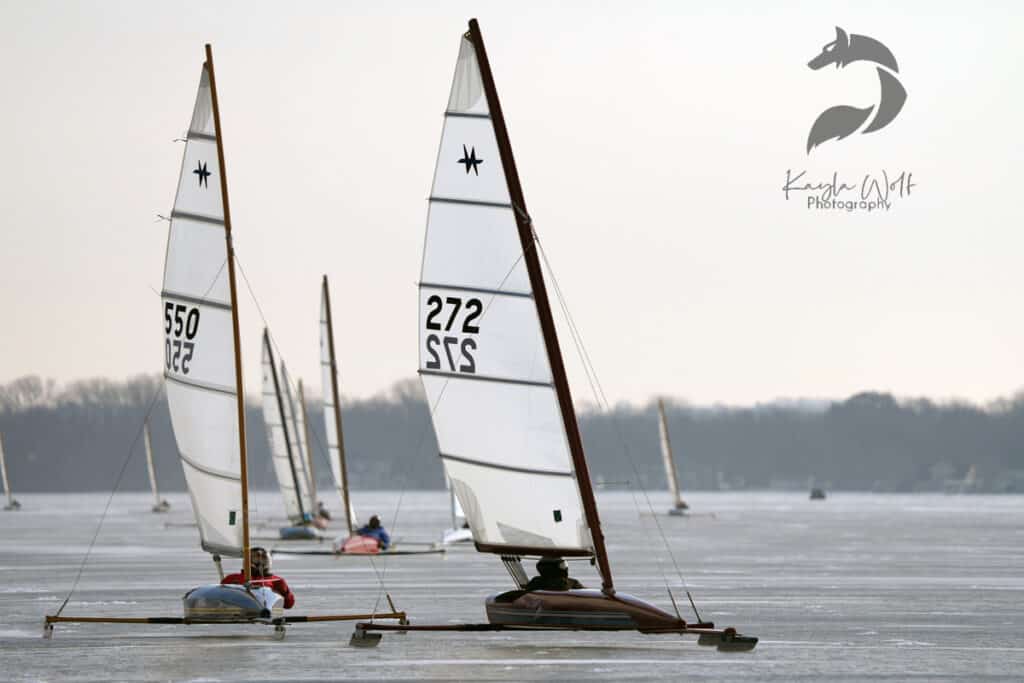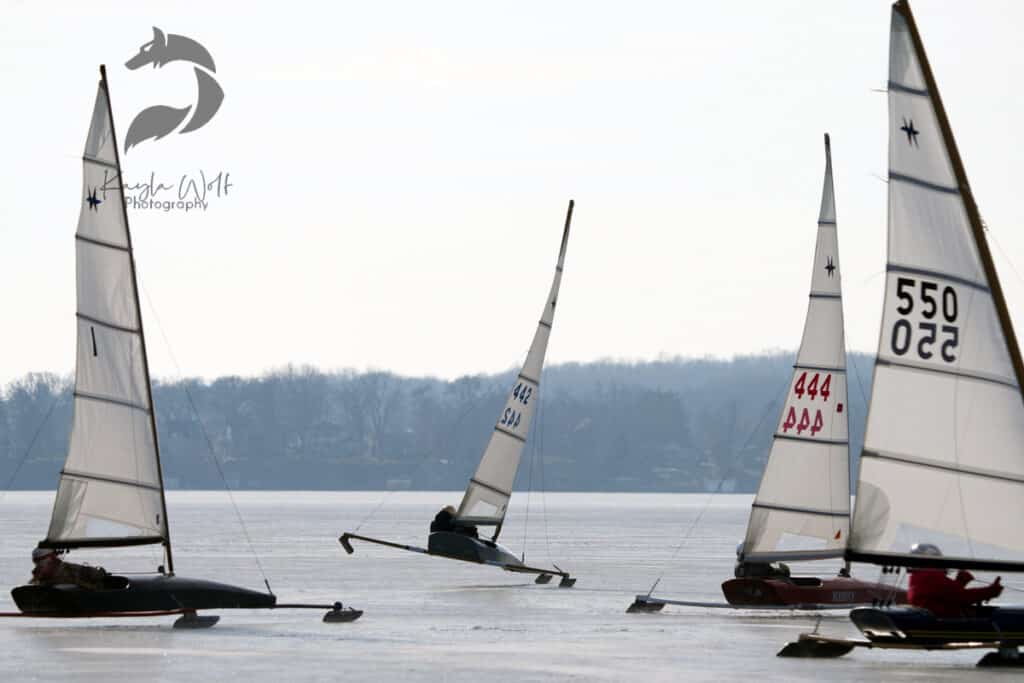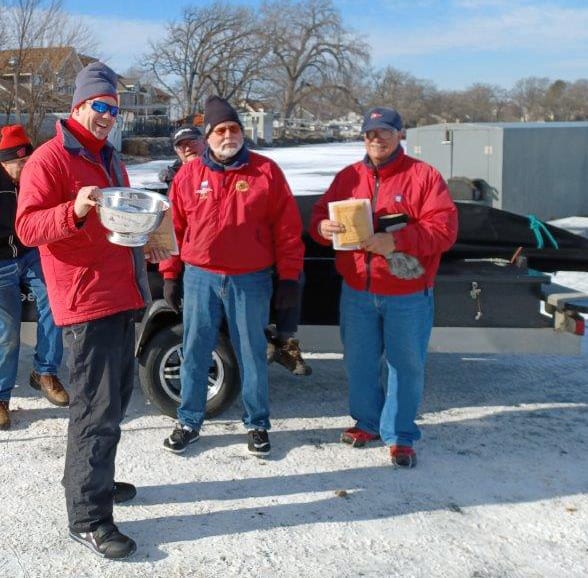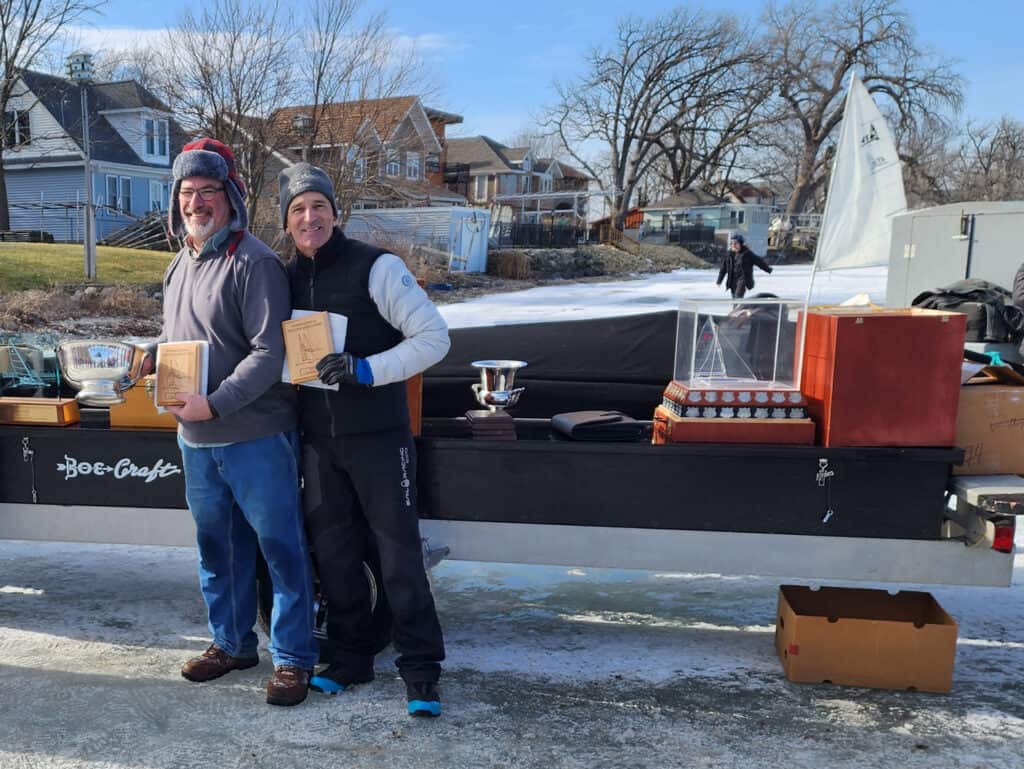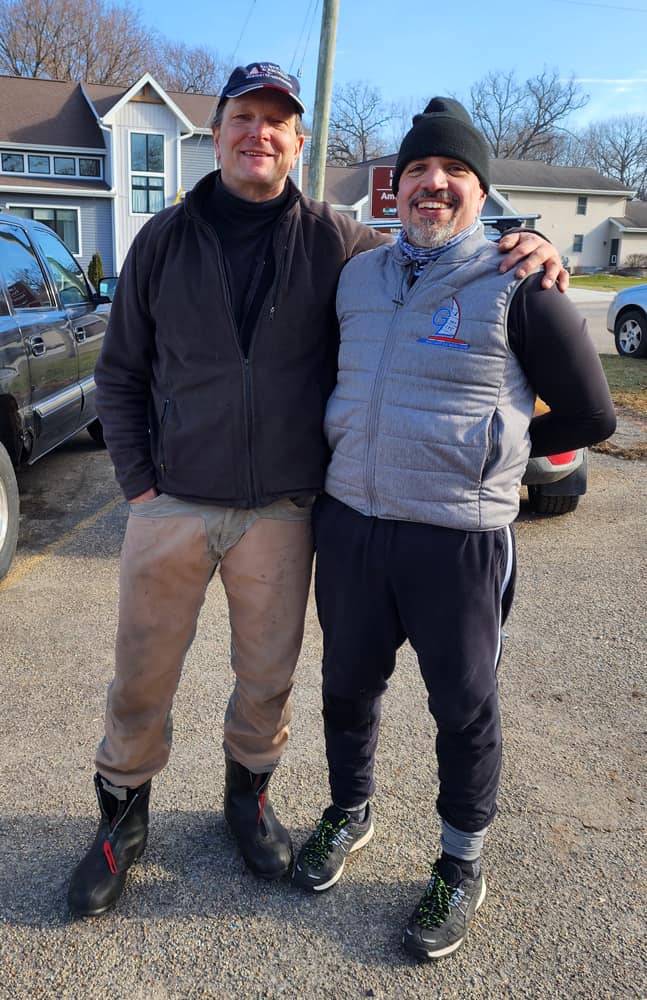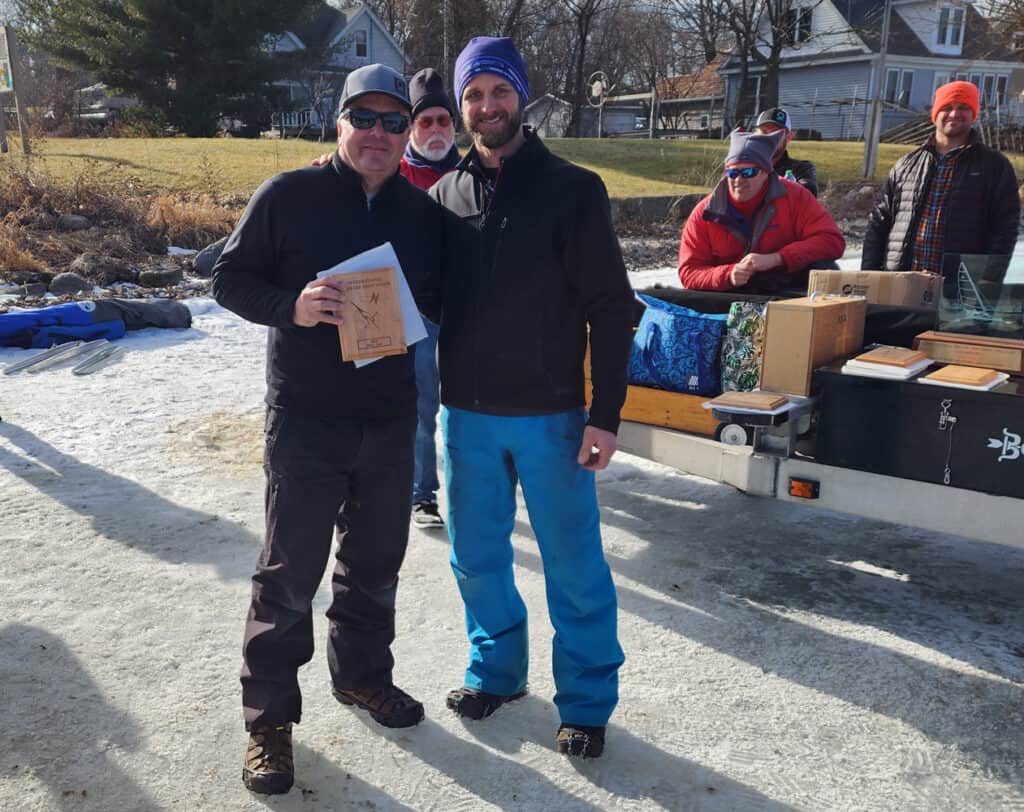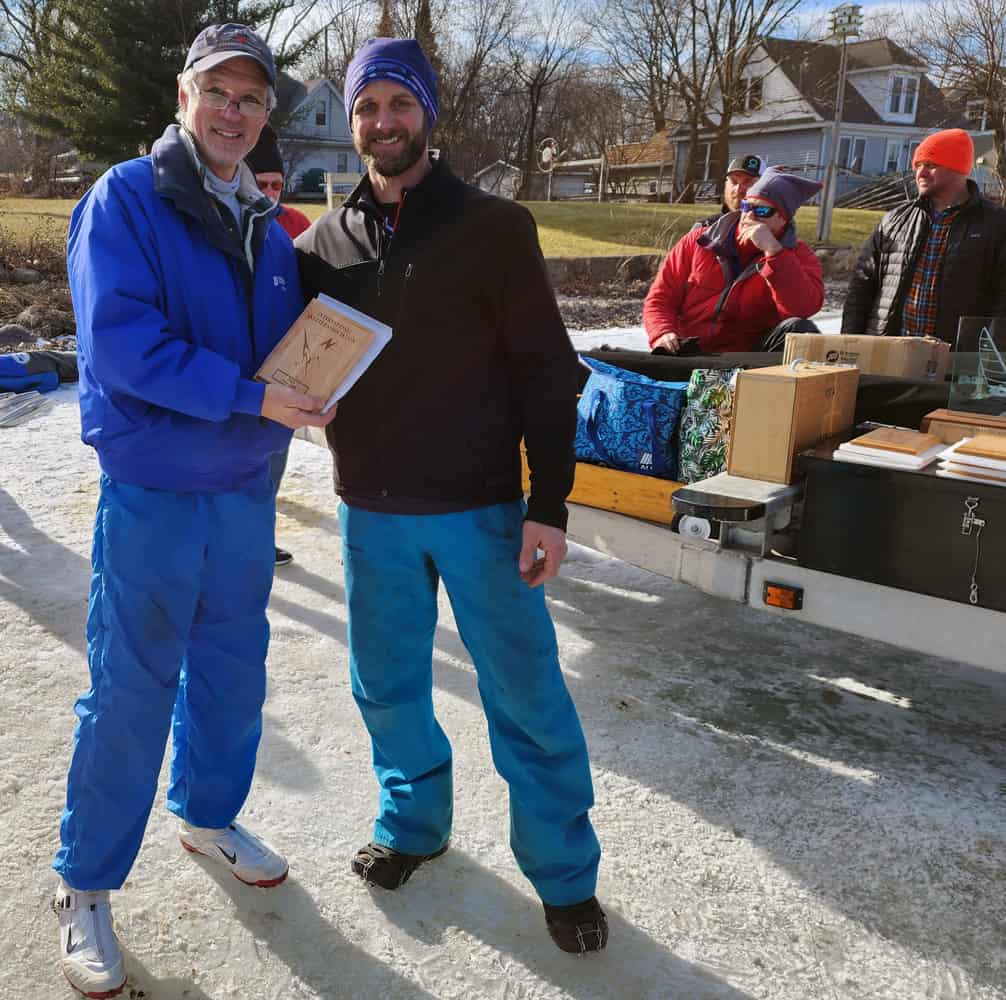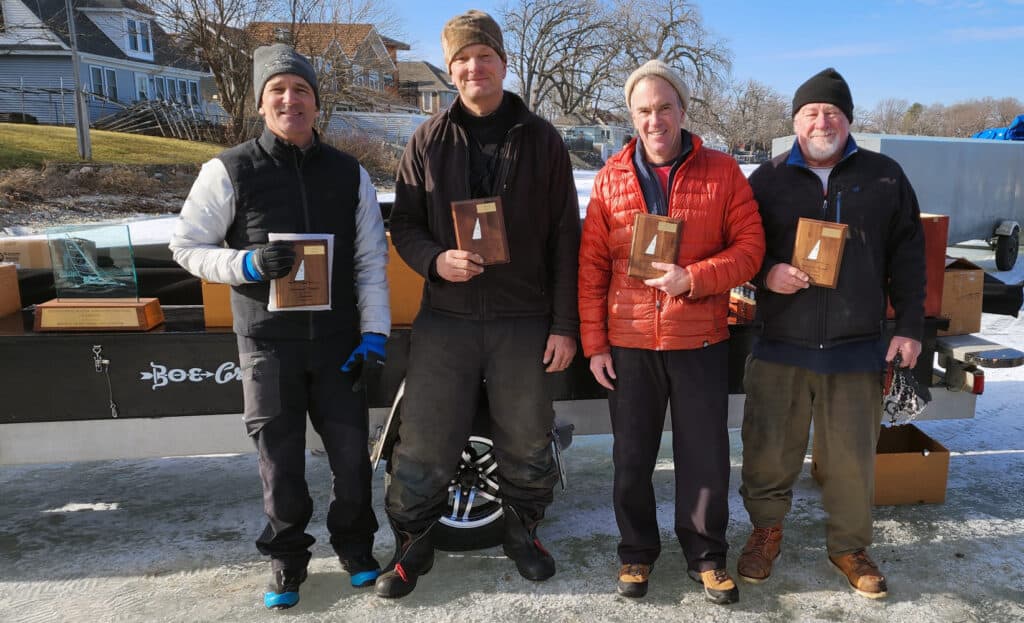UPCOMING:
4LIYC Meeting : Dec 3 @ Breakwater More information.
4LIYC Shipstore: Order custom iceboat shirts, hats, and gear. More information.
BURGEE: Order your 4LIYC Burgee
Pay Your Dues Online
2023 DN World Championship Opening Ceremony

Photo: Ethan Brodsky
2023 World & North American Championship Information
4LIYC Members:
As you may have heard, the DN World Championships are landing here in Madison. You are cordially invited to join us for the Opening Ceremony on Saturday. The event begins at 8 PM and will take place at my office at 1352 E. Wilson St. There will be an open bar and a charcuterie board worthy of a world championship. Please plan on joining in the fun.
Daniel Hearn
4LIYC Commodore
Regatta Watch: 2023 WSSA Postponed

Via WSSA Secretary Andy Gratton
The 2023 Wisconsin Stern Steering Association regatta has been postponed to January 28 and 29 due to too much snow [on Lake Petenwell – DW]. The next update will be Sunday, January 22. Check back here at that time. The Northwest Ice Yacht Association regatta takes precedence.
Andy GrattonWSSA Secretary/Treasurer
Kayla Wolf ISA & Renegade Championship Photo Gallery
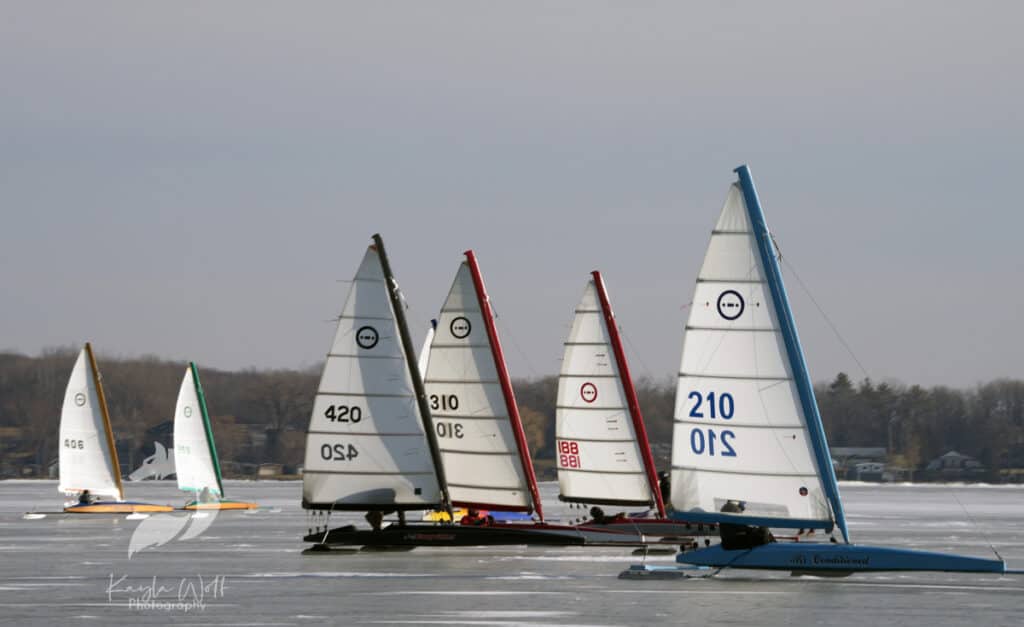 Start of a Renegade race at the 2023 Renegade Championship on Lake Kegonsa. Photo: Kayla Wolf
Start of a Renegade race at the 2023 Renegade Championship on Lake Kegonsa. Photo: Kayla Wolf
KAYLA WOLF PHOTO GALLERY
Freelance Photographer Kayla Wolf was there for the action Sunday on Lake Kegonsa at the ISA & Renegade Championship. Renegade and Nite sailors will want to make sure to look through her gallery for some fantastic shots. Link here
C-Skeeter Polish Championship

The Western Region of the DN Class (WI, MN, IL, IA, IN, UP of MI) is hosting the DN World & North American Championship in just a few days. Ice sailors from Poland and Sweden are here to train on Lake Kegonsa. The regatta site information will be announced on January 18, 2023, on idniyra.org. Regatta information.
Boat preparations are underway for the first-ever C-Skeeter Polish Match Racing Championship. Current DN World Champion, Robert Graczyk, will face off with former DN World Champion, Tomek Zakrzewski, on Lake Kegonsa in Stoughton, Wisconsin this Wednesday, January 18. Weather permitting, of course. At stake is a meal of Polish delicacies including pirogies and Polish sausage. But none of that cold soup. The loser will treat the winner and the boat owners/race committee at the prize giving ceremony, which will take place sometime during the ‘23 DN Worlds/North Americans.
To date, only the Black Ice/Loren ipsum camp has responded to requests for information about boat prep. The Drifter camp remains shielded under a cloak of secrecy, no doubt working on another traveler-like innovation to create an unfair advantage.
To make sure the race track is level, the two competitors will trade boats after each race, and the championship will conclude after an even number of races. Clearly the Drifter camp strategists have failed to read the Notice of Race and Sailing Instructions.
2023 ISA & Renegade Championship Awards

Renegades line up to race at the 2023 Renegade Championship on Lake Kegonsa, January 14, 2023. Photo: Will Johnston
RESULTS
A stronger breeze made it a wind hat trick on day three of the ISA and Renegade championships on Lake Kegonsa. The A & B Skeeters elected to watch the Nites and Renegades take to the course for spirited racing. All agreed they couldn’t remember when Mother Nature blessed the ISA with three sailable days. Renegaders discussed how this ISA was a record for them in the number of races (8.)
Many thanks to the Race Committee, including
Joe Norton, Jerry Simon, Scott Goetz, Paul McMillan, Afan Ottenhemier, and 4LIYC Commodore Daniel Hearn, who helped to organize the equipment. Also, many thanks to Ann Foeller, who tabulated remotely from Lake Erie’s shores and is a Toledo Ice Yacht Club member. And thank you to the many competitors who didn’t hesitate to pick up starting blocks, call numbers, and anything else to make the regatta run smoothly.
Will Johnston ISA & Renegade Championship Photo Gallery
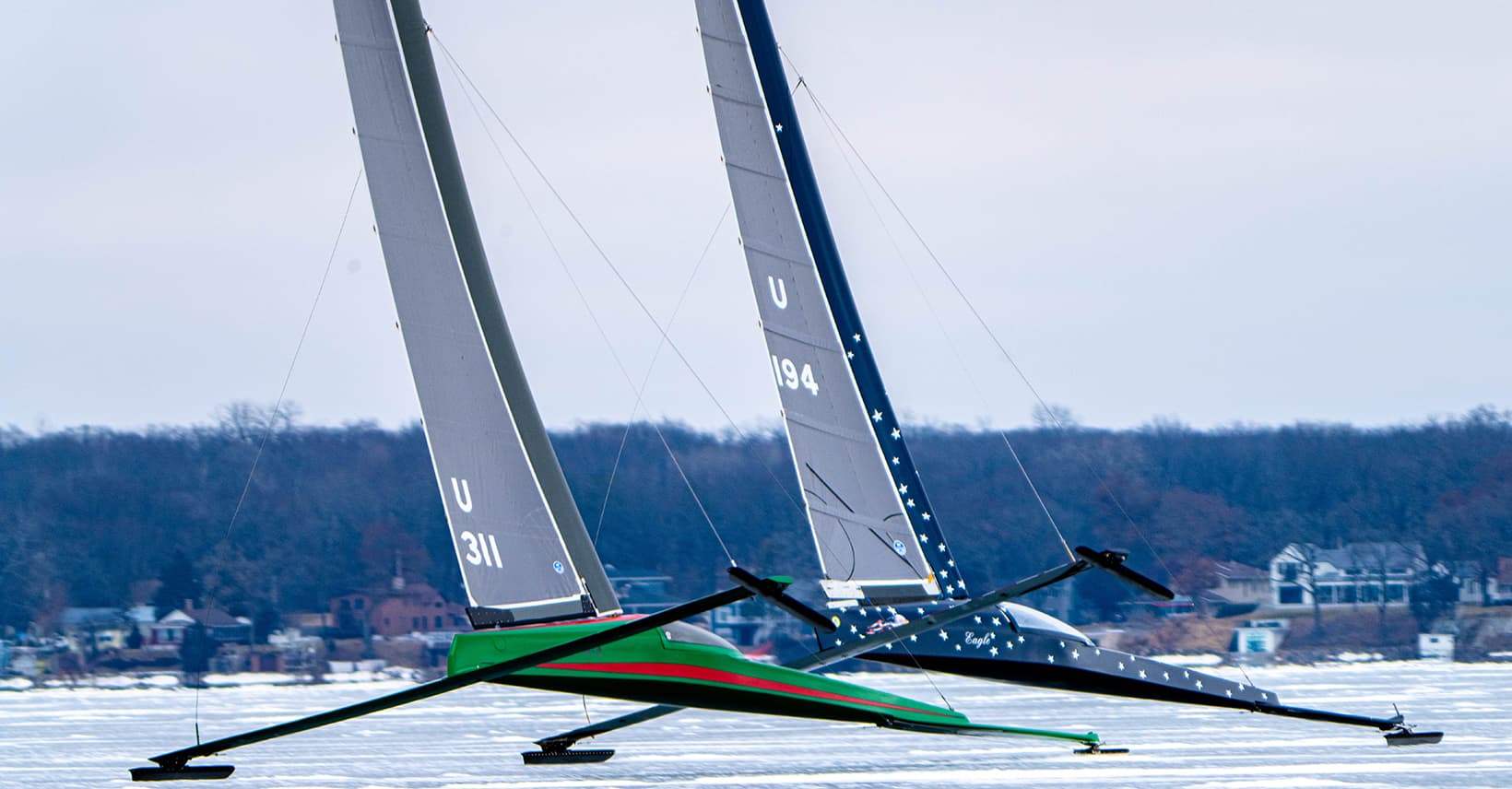
Class A Skeeters in perfect harmony. Photo: Will Johnston
Photographer Will Johnston joined us for a second year in a row for the 2023 ISA and Renegade Championship. He even hitched a ride in an airplane (friend of Jeff Russell’s) for some aerial shots. Will has generously shared a link to all of the photos. See all of them here. If you use Will’s photos for anything other than personal posts, please get in touch with me so I can give you his contact information.
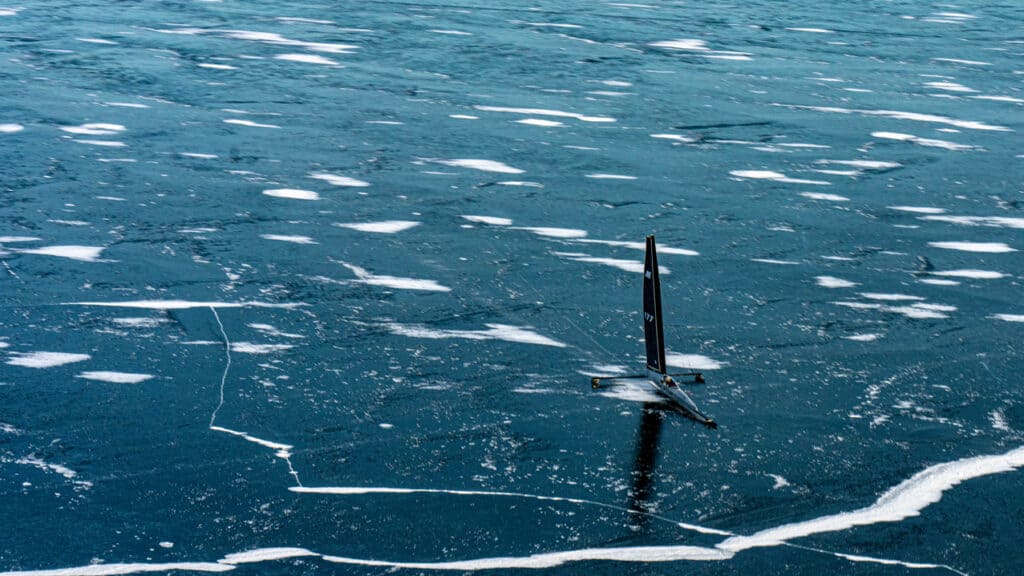
C Skeeter on Lake Kegonsa. Photo: Will Johnston
Regatta Watch: ’23 WSSA Called ON for Jan 21 – 22 @ Petenwell

Photo: Gretchen Dorian
The Wisconsin Stern Steering Association regatta for 2023 has been tentatively called on for January 21 and 22. The site selected is Lake Petenwell off the Lure restaurant. Final confirmation will be made by 1 PM Thursday, January 19. Check back here after that time. Ice thickness on the lake is 11″ or more, thicker at the landing which is a shallow beach off the Lure. There is 1/4″ to 1/2″ of soft snow currently on the ice. Rain and snow is forecast for later this week.
Andy Gratton
WSSA Secretary/Treasurer
ISA Fly By Video
Incredible drone footage from the 2023 International Skeeter Association Regatta & Renegade Championship on Friday, January 13, Lake Kegonsa.
Drone footage and editing by Logan Lien. Video Link
Logan’s Youtube Channel is @loganlien1848.
Instagram:@ loganlien
Regatta Watch: ’23 Northwest Postponed to January 27 – 29
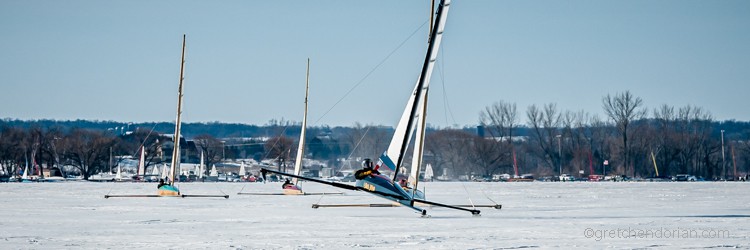
Boehmke B Skeeters on Green Lake in 2013. Photo: Gretchen Dorian
The 2023 Northwestern Ice Yachting Association Regatta is postponed to January 27th, 28th and 29th. The Race Committee is keeping the standard one week window between the ISA and Northwest Regattas.
Steve Schalk
NIYA
Secretary/Treasurer
ISA & Renegade Championship: Day 3 AM Report
 A Skeeters frame a Nite Class iceboat. Photo: Kenton Fowler
A Skeeters frame a Nite Class iceboat. Photo: Kenton Fowler
PROVISIONAL RESULTS
2023 ISA & RENEGADE CHAMPIONSHIP HOME
The wind made another welcomed appearance on the second day of the ISA & Renegade Championship. The A, B, C Skeeters, and the Renegades sailed three races in moderate breeze. The Nites were only able to complete two races today. The weather mark came down in the first Nite race of the day because someone hit it (and did the right thing by telling the Race Committee, thank you!) The race was black-flagged, the mark repaired, and then the A Skeeters began the rotation.
Nite points leader Tom Sweitzer broke his mast in the first Nite race. Luckily, the race was black-flagged, and he carries a spare mast. Tom was on the starting line for the final Nite race of the day and came in second to David Navin
The Nite fleet starts first in the rotation today at 9:30 AM (to make up their 6th race from Saturday), and then the regular order will resume.

